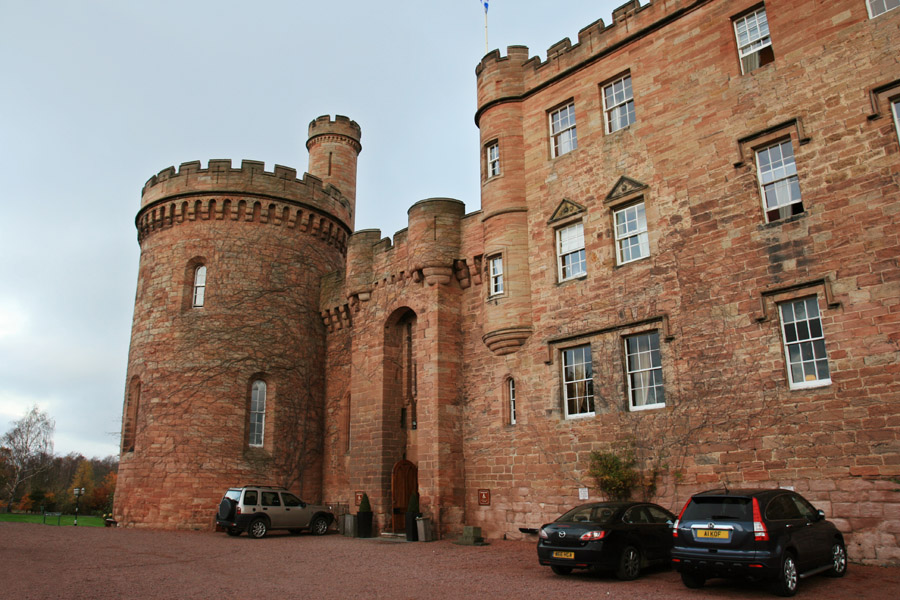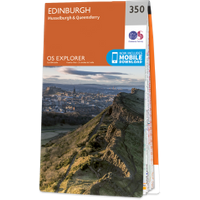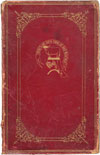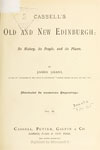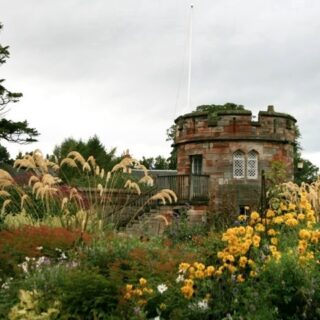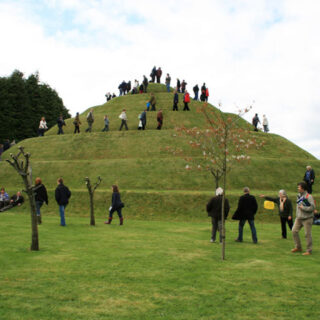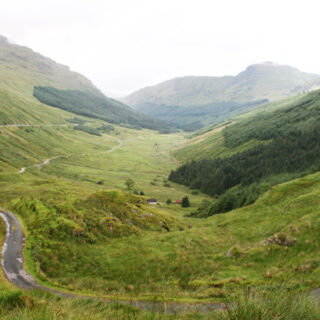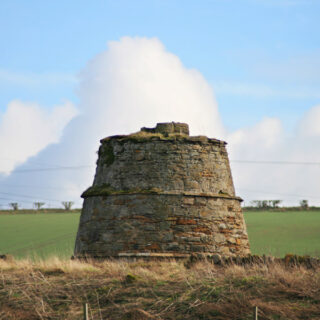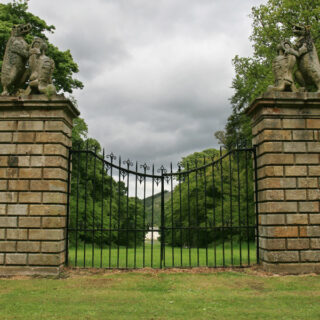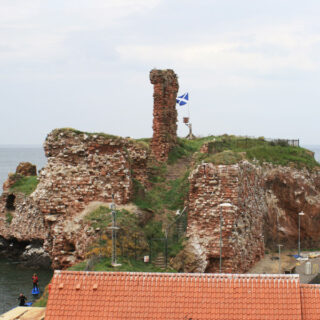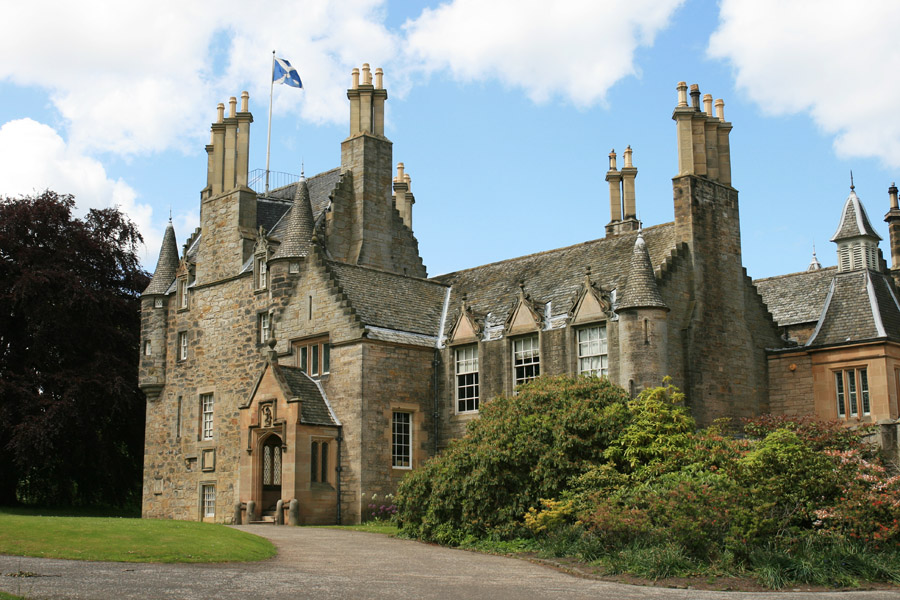
Lauriston Castle

Lauriston Castle today is a mixture of 16th century castle and 19th century mansion set in extensive grounds, and is run as a museum by the City of Edinburgh Council.
The lands on which the castle is built apparently belonged to the Crown in the 13th century, but in 1330 a charter was granted to a John Tennand of the “lands of Laureston”. By the late 15th century the lands were owned by a family who had taken their name from the estate, variously spelled as Laureston, Lauranstoun, Lawranstoun, Lawreston or Lowranston.
They sold the property to the Forresters of Corstorphine in 1540, but in 1544 the old castle, which stood to the east of the present castle, was destroyed by the Earl of Hereford during the Rough Wooing.
During an excavation of the east courtyard in 1985 a well associated with the older castle was discovered. Measuring 15 metres in depth, it was cut into the bedrock and contained water to a depth of 8 metres.
Henry Forrester sold Lauriston to Sir Archibald Napier of Merchiston, father of John Napier the inventor of logarithms, some time shortly after 1587, when Forrester succeeded to Corstorphine. Napier is thought to have been responsible for building Lauriston Castle around 1590.
Napier’s castle was originally built on a T-plan, with a main rectangular block running approximately east-west and a round stair tower projecting from the middle of the north side.
The main block measures 12.2m east to west by 7.3m north to south, and consists of four storeys. At the top of the main round stair tower a square caphouse is corbelled out, and a corbelled out small round turret in the north-west angle gives access to the upper floors.
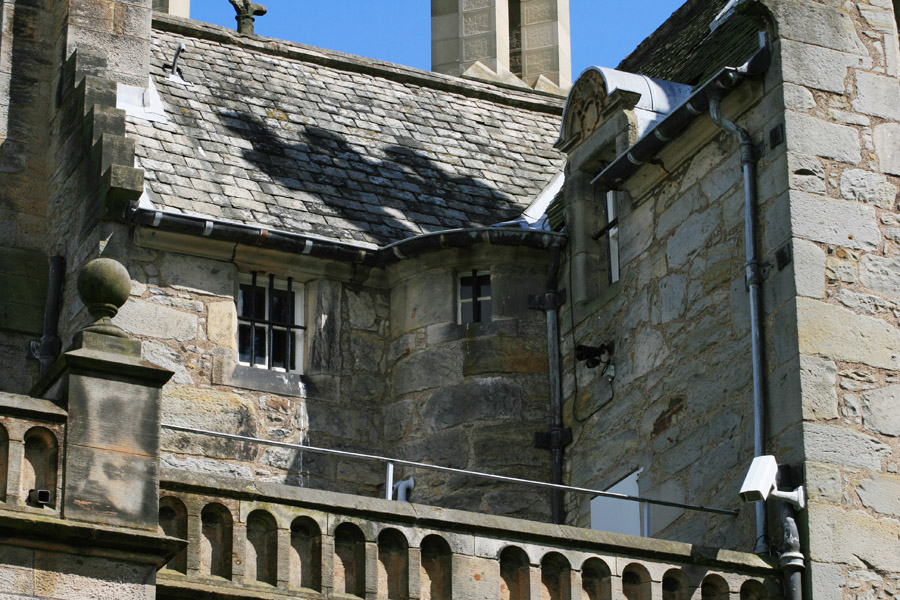
Two round turrets project from the south-west and south-east corners of the second floor, and are two storeys in height. Between them, either side of a large chimney, are two dormer windows. The eastern one has a carved pediment over it carrying the initials DEM for Archibald Napier’s second wife, Dame Elizabeth Mowbray, daughter of Sir Robert Mowbray of Barnbougle.
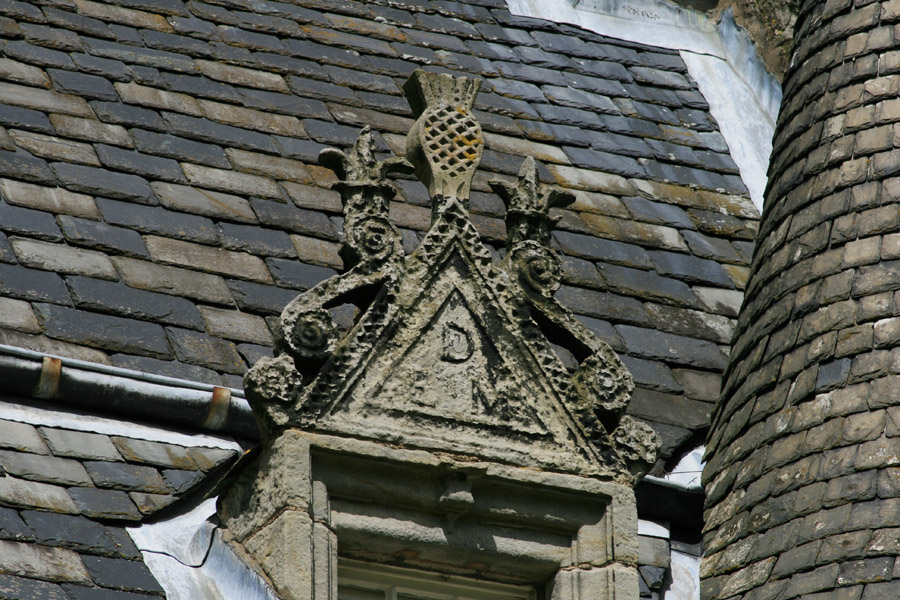
The western dormer window has obviously had its pediment replaced, as it is much sharper, in a different colour of stone, and carries the date 1856, along with the initials MS and CHCI (for Charles Halkett-Craigie-Inglis, a later owner, and presumably his wife). Originally this pediment seems to have been carved with initials SAN for Sir Archibald Napier.
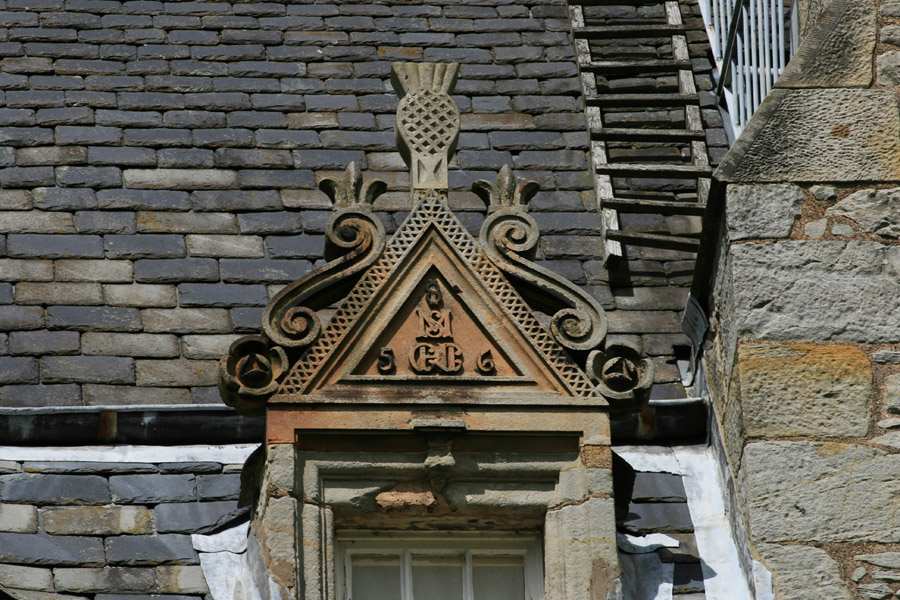
Following Sir Archibald’s death in 1608, Lauriston Castle passed to his younger son, Sir Alexander Napier, who would later become a Lord of Session and be titled Lord Lauriston. On the front of the castle is a carved panel which is said to be an astrological horoscope created by John Napier for his brother.
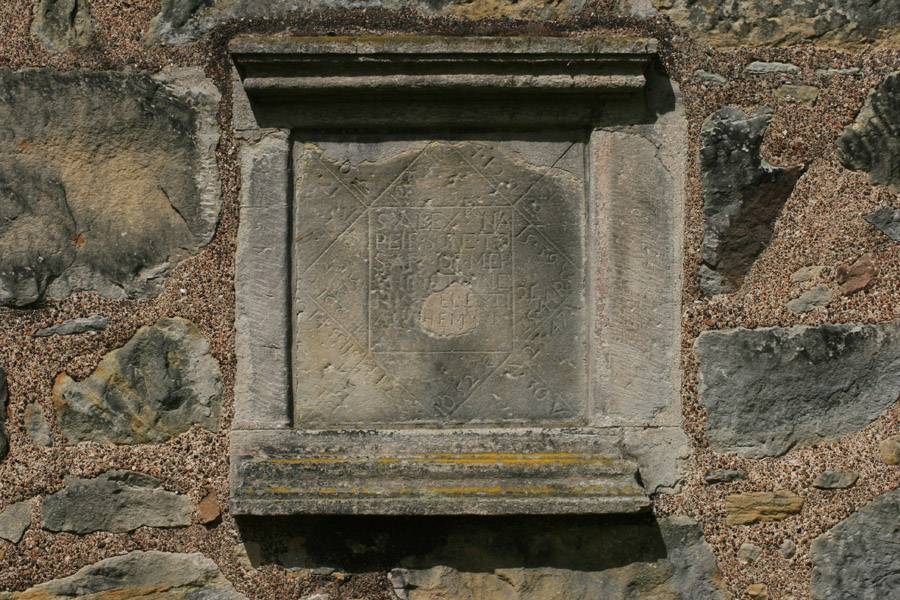
When Alexander died in 1629, the castle passed through the hands of three more owners – John Cant of The Grange, Thomas Rigg of Aithernie, and Robert Dalgleish.
Dalgleish may have been responsible for inserting the 17th century doorway into the front of the castle at ground floor level, which almost certainly replaced an original first floor entrance. A carved panel above the door mentions Dalgleish and his wife, Jean Douglas of Pumpherston.
Above and to the right of the new door, now converted to a window, are the remains of an archway which may have been associated in some way with the original entrance.
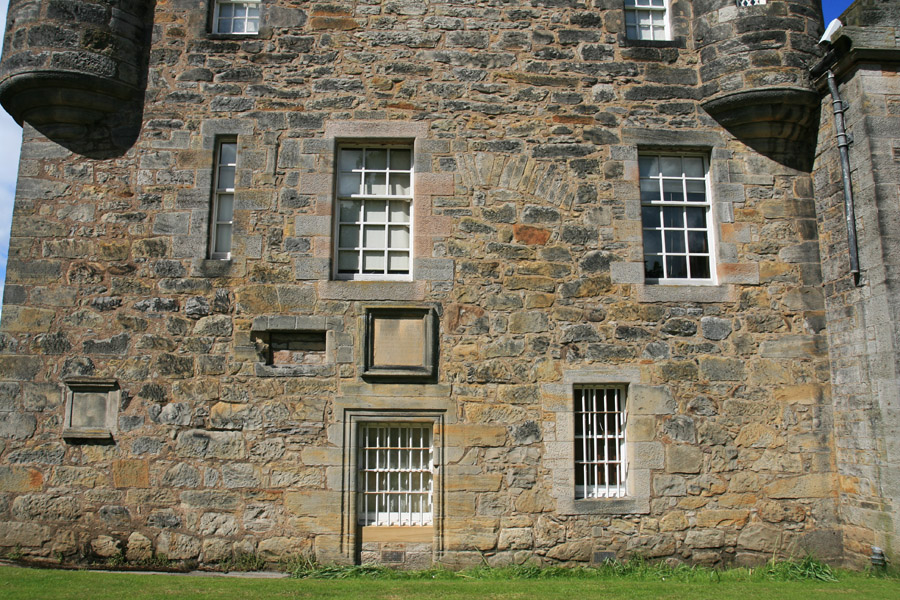
In 1683 the castle was bought by William Law, a goldsmith in Edinburgh. Law’s son, the economist John Law, also known as Mississippi Law, is sometimes said to have been born in Lauriston Castle, but he was actually born in 1671. Law was responsible for founding the Banque Générale in Paris in 1716, the forerunner of the Banque de France, the French central bank.
The castle remained in the Law family for several generations, although it isn’t thought to have been used as a main residence during that time, before it was sold by John William Law in 1823 to the mineralogist Thomas Allan.
Allan commissioned William Burn to make additions to the castle, building a two storey wing extending from the east of the tower between 1824 and 1827. He was also responsible for the free-standing coachman’s house to the east of the main house. The new wing has carved pediments over the windows and a small turret at the south-east corner to help to match it with the style of the tower.
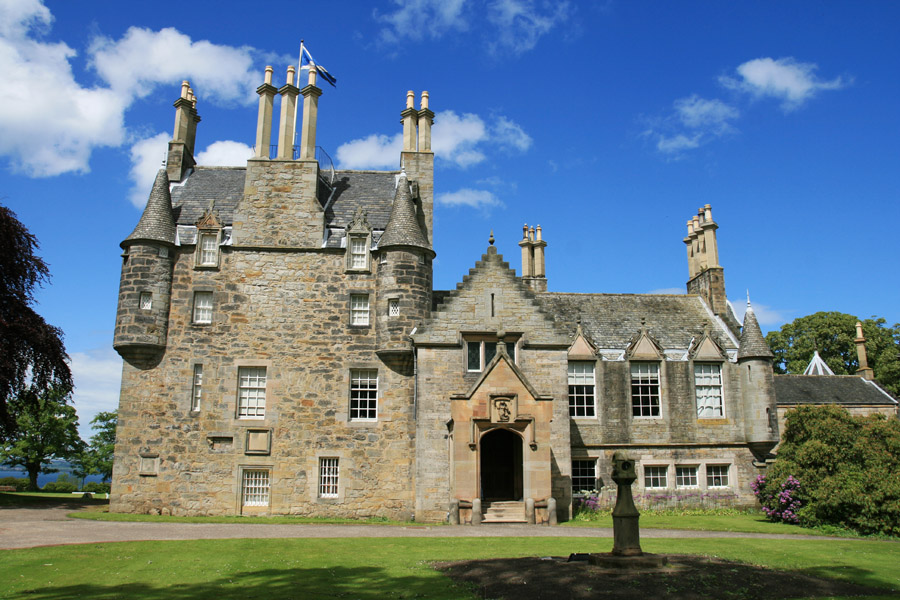
To the rear of the castle more extensive additions were made, which swallowed up the base of the old stair tower.
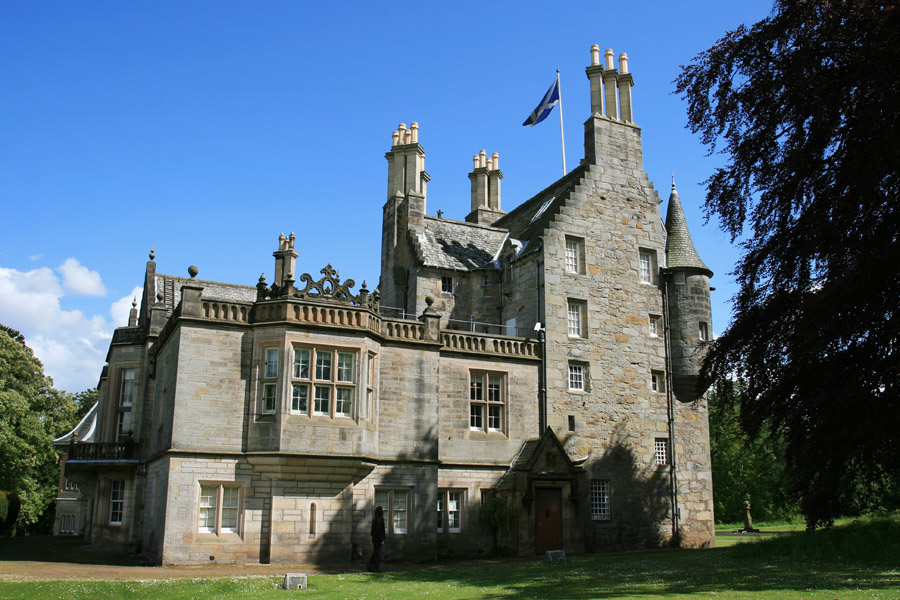
Following Allan’s death in 1833 Lauriston was sold to William Ramsay, a director of the Royal Bank of Scotland who also owned the neighbouring Barnton estate (made up of the old estates of Cramond Regis and Barnton). His tenure was relatively short, and he sold Lauriston Castle to Andrew Rutherfurd, Lord Rutherfurd, in 1842 after adding three of Lauriston’s fields to the Barnton estates.
Rutherfurd employed WH Playfair to landscape the gardens in 1845, and he was also responsible for adding the gabled porches to the south and west sides of the house.
After Lord Rutherfurd’s death in 1854, Lauriston was sold to Charles Halkett-Craigie-Inglis who had inherited the neighbouring estate of Cramond from his cousin, Lady Torphichen, in 1849.
He in turn sold it to Miss Macpherson Grant of Aberlour in 1859, but kept the fields which adjoined the Cramond estate, leaving Lauriston Castle with 32 acres. Miss Macpherson Grant kept cattle on the land, and built a small dairy in the grounds of the castle to the east.
In 1871 Lauriston Castle was bought by Thomas Macknight Crawfurd, the 8th Baron of Cartsburn, who commissioned the building of a wing linking the main house to the coachman’s house. He was also responsible for bringing some architectural details to Lauriston from the his 17th century mansion of Cartsburn.
Crawfurd later sold Lauriston to William Reid, an Edinburgh cabinet maker, in 1902, and Reid set about modernising the interiors and furnishing it with Edwardian furniture that he collected. Reid also remodelled a pond in front of the castle, reducing its depth for safety. The pond had previously been a quarry, from which some of the stone for the castle had presumably been sourced.
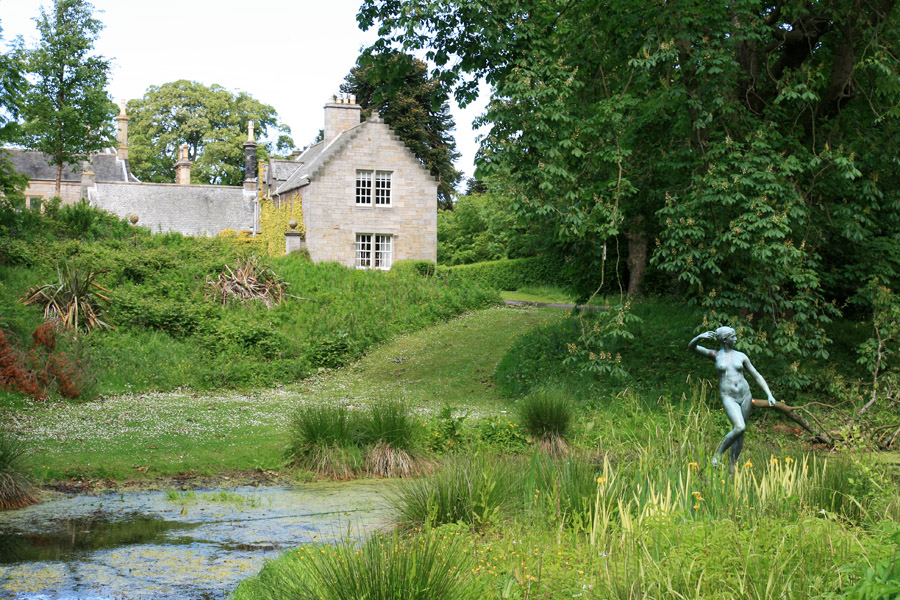
Following Reid’s death in 1919 his wife Margaret lived in the castle until her death in 1926, when, as previously agreed with her husband, Lauriston Castle, its contents and grounds were gifted to the nation, and the City of Edinburgh Council took over the management of the castle. It was occupied during the Second World War by the Home Guard, but since then has operated as a museum.
Behind the castle are a rose garden, three croquet lawns, and an Edinburgh – Kyoto Friendship garden designed by Takashi Sawano and opened in 2002.
Alternative names for Lauriston Castle
Laurenstoun; Laureston; Lauranstoun; Lawranstoun; Lawreston; Louranstoun; Lowranston; Lowranstoun
Where is Lauriston Castle?
Lauriston Castle is in the parish of Edinburgh and the county of Midlothian.
Grid reference:NT 20294 76097
Lat / long:55.971169,-3.27884
